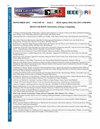根据 IEC 63027 对配备 AFCI 的逆变器中的串联电弧故障进行符合性分析
IF 1.3
4区 工程技术
Q3 COMPUTER SCIENCE, INFORMATION SYSTEMS
引用次数: 0
摘要
巴西国家计量、质量和技术研究所(Instituto Nacional de Metrologia, Qualidade e Tecnologia - INMETRO)介绍说,从 2024 年开始,所有在巴西市场上销售的光伏(PV)逆变器都必须在其系统中加入电弧故障电路中断(AFCI)功能。这些逆变器必须符合 IEC 63027:2023(光伏电力系统直流电弧检测和中断)标准。有鉴于此,麦肯锡长老会大学(Universidade Presbiteriana Mackenzie UPM)电气工程实验室按照 IEC 63027 标准对市场上的三款逆变器进行了一系列电弧故障测试。考虑到最大功率点跟踪 (MPPT) 端口的数量、不同的阻抗拓扑结构、电弧在光伏系统中的位置以及电压和电流的最大值,三台逆变器中的每一台都经历了总共 32 次电弧故障。实验结果表明,三台逆变器中有两台无法达到检测和中断串联电弧故障的国际标准,这突出表明有必要对巴西市场上销售的光伏逆变器进行评估。在分析过程中注意到,对于 IEC 63027 提出的某些参数,在评估与电弧自熄或实际 AFCI 干预有关的数据方面存在信息空白。这表明,这种情况可能会引起关注:逆变器有可能在未采用有效 AFCI 技术的情况下达到国际标准。对 96 次测试的电弧检测时间和电弧能量进行了比较。对数据进行了分析,并就电弧自熄现象和 AFCI 的运行情况进行了比较。对 IEC 63027 标准提出了改进建议本文章由计算机程序翻译,如有差异,请以英文原文为准。
Compliance Analysis of Series Arc-fault in AFCI- Equipped Inverters in Accordance with IEC 63027
The National Institute of Metrology, Quality and Technology (Instituto Nacional de Metrologia, Qualidade e Tecnologia - INMETRO) introduces that, starting in 2024, all photovoltaic (PV) inverters sold in the Brazilian market must incorporate an Arc-Fault Circuit Interrupt (AFCI) function into their systems. These inverters are required to comply with the IEC 63027:2023 (Photovoltaic power systems DC arc detection and interruption) standard. Considering this, the Electrical Engineering Laboratory at Mackenzie Presbyterian University (Universidade Presbiteriana Mackenzie UPM) conducted a series of arc-faults tests on three inverters available in the market, following the IEC 63027 standard. Each of the three inverters underwent a total of 32 arcs, considering number of Maximum Power Point Tracking (MPPT) ports, different impedance topologies, arc position in the PV system, and maximum values of voltage and current. The experiments revealed that two of the three inverters are not capable of meeting the international standard for detecting and interrupting series arc-faults, highlighting the need evaluation of PV inverter sold in the Brazilian market. During the analysis, it was noted that for certain parameters proposed by IEC 63027, there is a gap of information regarding evaluation of the data relating to arc self-extinguish or actual AFCI intervention. It is show that this scenario can raise a concern: the possibility exists for an inverter meet the international standard without implementing an effective AFCI technology. The 96 tests conducted were compared in terms of arc detection time and arc energy. The data were analyzed and compared with respect to the phenomena of arc self-extinguishing and the operation of the AFCI. Suggestions for enhancements to the IEC 63027 standard were provided
求助全文
通过发布文献求助,成功后即可免费获取论文全文。
去求助
来源期刊

IEEE Latin America Transactions
COMPUTER SCIENCE, INFORMATION SYSTEMS-ENGINEERING, ELECTRICAL & ELECTRONIC
CiteScore
3.50
自引率
7.70%
发文量
192
审稿时长
3-8 weeks
期刊介绍:
IEEE Latin America Transactions (IEEE LATAM) is an interdisciplinary journal focused on the dissemination of original and quality research papers / review articles in Spanish and Portuguese of emerging topics in three main areas: Computing, Electric Energy and Electronics. Some of the sub-areas of the journal are, but not limited to: Automatic control, communications, instrumentation, artificial intelligence, power and industrial electronics, fault diagnosis and detection, transportation electrification, internet of things, electrical machines, circuits and systems, biomedicine and biomedical / haptic applications, secure communications, robotics, sensors and actuators, computer networks, smart grids, among others.
 求助内容:
求助内容: 应助结果提醒方式:
应助结果提醒方式:


